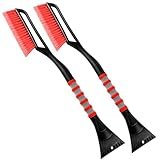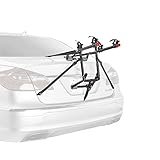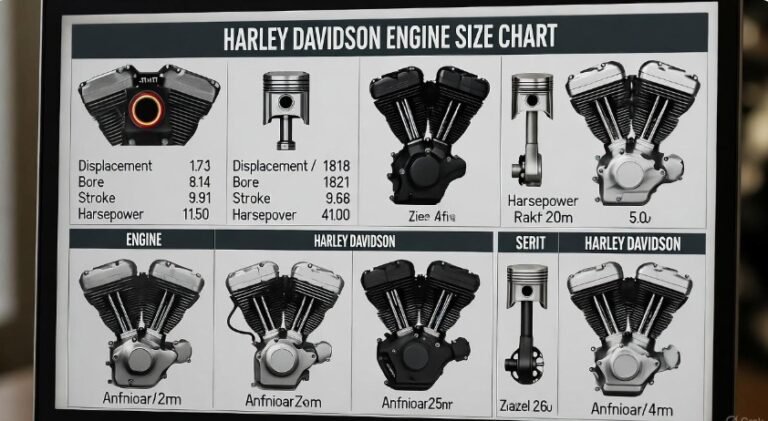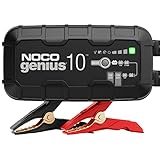Guide to Car Towing Service with Flatbed: Safe, Smart, and Stress-Free
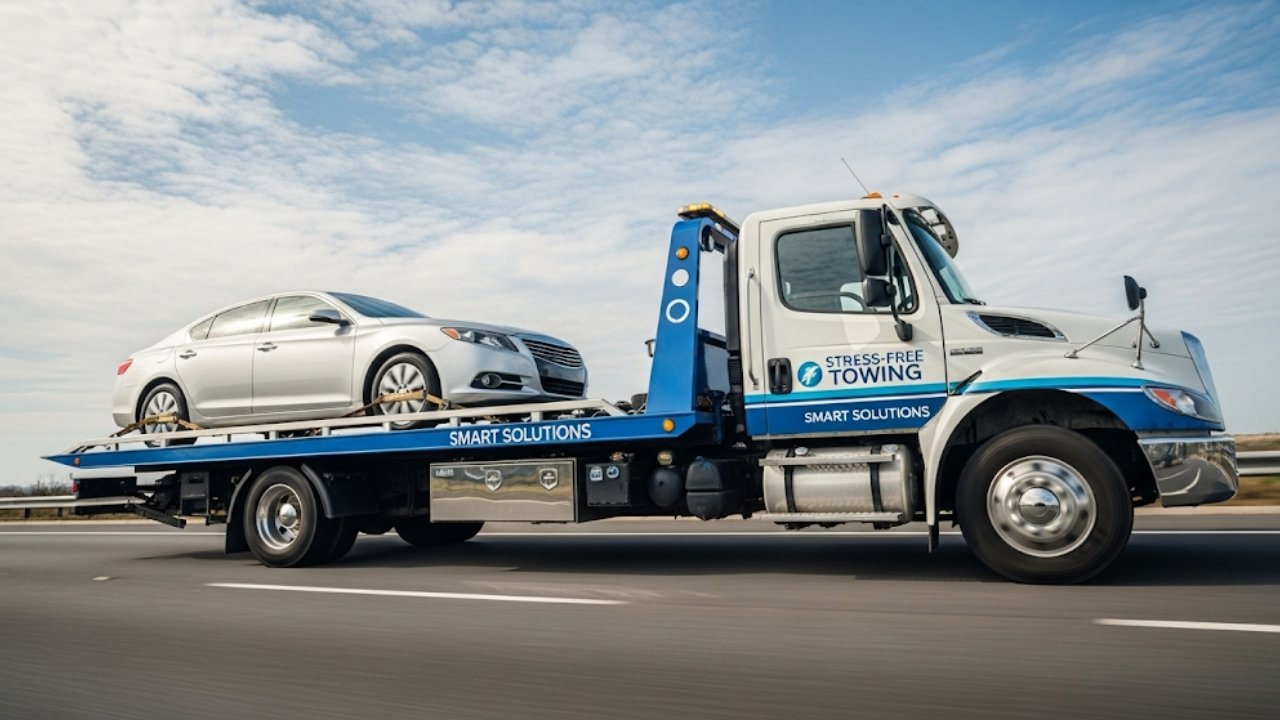
Have you ever had one of those days where your car just… gives up? It happened to me on a rainy Tuesday. My old sedan sputtered to a halt on a quiet road in the middle of nowhere. I called a towing service, half expecting a rusty old hook truck, but what showed up was something different — a flatbed tow truck. And let me tell you, that made all the difference.
A car towing service with flatbed isn’t just another option — it’s often the safest, smartest, and smoothest way to transport your vehicle. Whether your car broke down, your battery died, or you’re relocating a luxury car, flatbed towing offers protection, peace of mind, and professionalism.
Let’s dive deep into why this service matters, what it includes, when to choose it, and how it can actually save your day — or your car!
In This Article
- 1 What Is a Car Towing Service with Flatbed?
- 2 Top Benefits of Using a Car Towing Service with Flatbed
- 3 When Should You Use Flatbed Towing Instead of Traditional Tow Trucks?
- 4 How Does a Flatbed Towing Truck Actually Work?
- 5 Common Flatbed Towing Myths — Busted
- 6 How to Choose the Right Flatbed Towing Service Near You
- 7 What You Should Expect to Pay for Flatbed Towing
- 8 Personal Experience: Flatbed Towing Saved My Car (and My Sanity)
- 9 Flatbed Towing vs Traditional Towing: A Quick Comparison
- 10 What Type of Vehicles Need Flatbed Towing Most?
- 11 Emergency Flatbed Towing: What to Do in a Breakdown
- 12 What to Ask Before Hiring a Flatbed Towing Service
- 13 Tips to Avoid Towing Scams
- 14 Frequently Asked Questions (FAQs)
- 14.1 1. Is flatbed towing safe for all vehicles?
- 14.2 2. Does insurance cover flatbed towing?
- 14.3 3. How long does a flatbed tow usually take?
- 14.4 4. Can I ride with the driver during a flatbed tow?
- 14.5 5. Is flatbed towing more expensive than regular towing?
- 14.6 6. Can flatbed trucks tow motorcycles or small vehicles?
- 14.7 7. What happens if my car is stuck in a ditch or snow?
- 15 Final Thoughts: Is Flatbed Towing Worth It?
What Is a Car Towing Service with Flatbed?
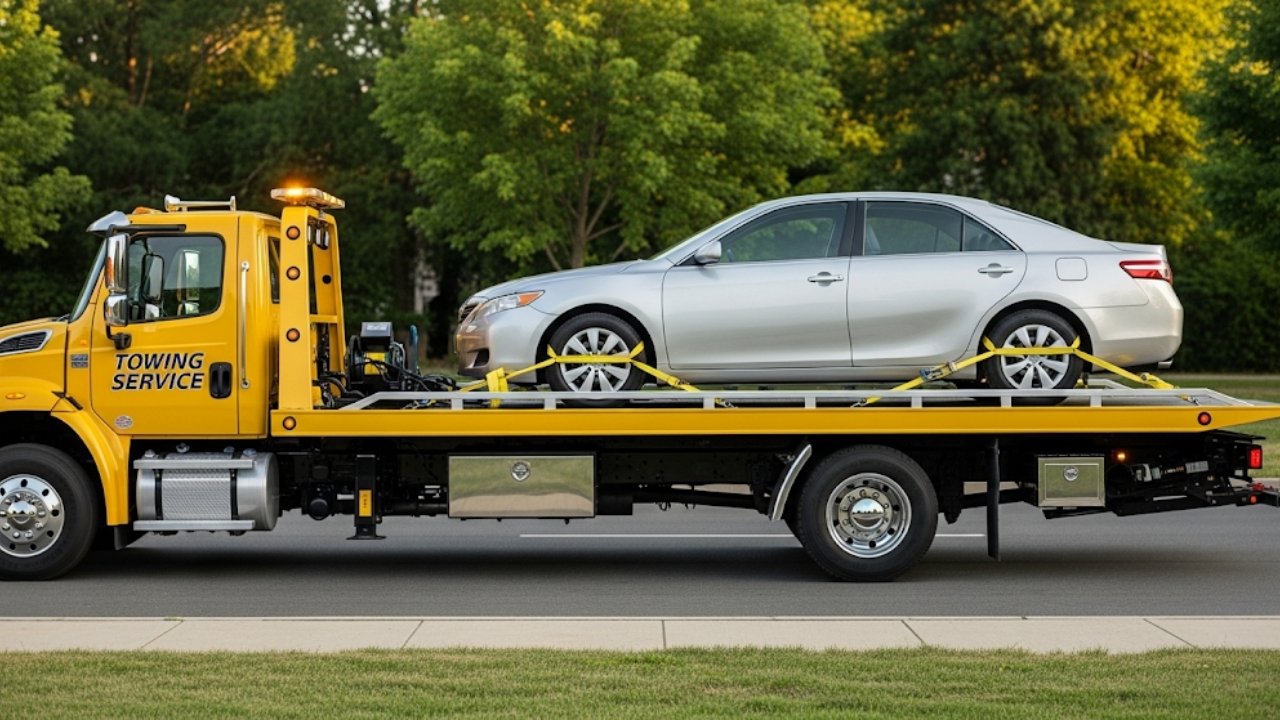
Think of it like this — would you rather piggyback your car safely above the ground or drag it through traffic with half of it bumping along the pavement? The answer’s pretty clear, right?
Why Flatbed Towing Is Preferred
-
Entire car lifted off the road — safer for all types of vehicles
-
No tire wear or axle strain during transport
-
Better protection for luxury, low-clearance, or classic cars
-
Can tow all-wheel-drive and electric vehicles easily
Flatbed towing is not just for broken-down cars either. Many car enthusiasts use this service to transport high-end vehicles to car shows. Dealerships also rely on it to move inventory between lots.
Top Benefits of Using a Car Towing Service with Flatbed
You don’t need to be a car expert to understand why flatbed towing is often the better choice. But let’s break it down with some real-life logic and emotional relief.
1. Prevents Further Damage
Dragging a car with two wheels on the ground can ruin your drivetrain, especially if it’s an AWD or electric vehicle. Flatbed towing avoids this altogether. Everything is lifted — your car rides like royalty on the back of the truck.
I once had a friend who ignored this advice. Her hybrid car was towed using the wrong method, and she ended up with a damaged transmission. It cost her nearly $2,000 to fix what towing had ruined. Had she chosen a car towing service with flatbed, she could’ve saved all that stress and money.
2. Safer for Long Distances
Imagine towing a car through 50 miles of highways and potholes. Flatbed towing ensures that no part of the car touches the road, reducing wear and avoiding flying debris. It’s like putting your car in a moving bubble.
3. Works for a Wide Range of Vehicles
Whether it’s a:
-
Sports car
-
Vintage truck
-
SUV
-
Electric vehicle (like a Tesla)
-
Motorbike
…a flatbed tow truck can carry it all. There are no wheel restrictions, height concerns, or underbody dragging.
When Should You Use Flatbed Towing Instead of Traditional Tow Trucks?
Most people think towing is just towing. But timing and method matter more than you’d think.
Choose a flatbed towing service when:
-
Your car has all-wheel drive or is electric
-
Your vehicle is heavily damaged after an accident
-
You’re transporting luxury or collector cars
-
Your car’s tires or wheels are compromised
-
You need long-distance towing
Dragging your car in any of these situations is like pulling a sprained ankle through gravel. Unnecessary pain and damage.
How Does a Flatbed Towing Truck Actually Work?
Let’s get technical — but in a simple way.
A flatbed tow truck uses hydraulics to tilt the bed downward and create a ramp. Your car is either winched or driven onto the bed. Then the bed is lowered flat, and the car is securely strapped.
Here’s a quick overview table:
| Step | What Happens |
|---|---|
| 1. Truck arrives | Driver assesses your car’s position |
| 2. Ramp tilts down | Hydraulic lift creates a loading slope |
| 3. Car is loaded | Vehicle is winched or driven onto the flatbed |
| 4. Car secured | Heavy-duty straps keep your car in place |
| 5. Transport begins | Safe and stable ride to your destination |
Everything stays smooth. No jerks, no wheel spin, and no metal scraping. It’s really satisfying to watch, honestly.
Common Flatbed Towing Myths — Busted
Just like anything else, car towing services with flatbed get a fair share of myths. Let’s set the record straight.
Myth #1: Flatbed towing is too expensive
Reality: It might cost slightly more upfront, but it saves you from costly damage. Plus, many insurance providers cover flatbed towing under roadside assistance.
Myth #2: Only fancy cars need flatbed towing
Nope. Even a regular compact car can benefit from flatbed towing — especially if it has a flat tire, broken axle, or won’t start.
Myth #3: Flatbed trucks take longer to operate
They do take an extra minute or two to load, but the process is very efficient. And that few minutes could save you hours of repair time later.
How to Choose the Right Flatbed Towing Service Near You
You’re stuck on the roadside — how do you pick a towing company you can trust?
Here are a few things to look for:
✅ Professionalism
Do they show up on time? Are they polite and patient?
✅ Experience
Ask how long they’ve been doing flatbed towing. It’s a skilled job.
✅ Reviews
Check Google reviews or Yelp. Real people leave real feedback.
✅ Licensing & Insurance
Make sure the company is certified and insured to handle your car.
✅ Pricing Transparency
You don’t want surprise charges. A reliable towing service will explain costs upfront.
✅ 24/7 Availability
Breakdowns don’t follow business hours. Your towing company shouldn’t either.
What You Should Expect to Pay for Flatbed Towing
Alright, let’s talk dollars and cents.
Average cost of flatbed towing:
-
Base fee (hook-up): $75 – $125
-
Per-mile charge: $2 – $4 per mile
-
Long-distance flatbed: $250 – $600+
Keep in mind, prices vary by location, vehicle size, and urgency (after-hours service might cost more). Some roadside memberships cover flatbed towing — so always check your policy!
✅ Key Features That Make Flatbed Towing Worth It
Let’s sum up why so many people choose a car towing service with flatbed:
-
No risk of undercarriage damage
-
Tire and suspension stay protected
-
Safe for any vehicle type
-
Ideal for emergencies or long hauls
-
Prevents extra repair bills
If you’ve ever seen a lowered car trying to get towed with wheels dragging, you already know how important this option is.
Personal Experience: Flatbed Towing Saved My Car (and My Sanity)
Let me take you back to a snowy night in January. My SUV slid into a curb during a light snowstorm and cracked something underneath. I wasn’t sure what had broken — but I knew I couldn’t drive it. I called a car towing service with flatbed, and within 30 minutes, a calm and professional driver arrived.
He carefully loaded my car onto the truck, checking each wheel and securing every strap like it was a baby crib. No joke — I actually felt relieved watching my car being treated with that much care. He even dropped me off at the mechanic on the way.
Had I chosen a hook-and-chain or wheel-lift tow truck, that snowy damage could’ve doubled. That’s when I really understood: flatbed towing isn’t just about luxury cars — it’s about peace of mind.
Flatbed Towing vs Traditional Towing: A Quick Comparison
Here’s a helpful breakdown of how flatbed towing compares to older towing methods:
| Feature | Flatbed Towing | Hook and Chain / Wheel Lift |
|---|---|---|
| Vehicle contact | Entire car is off the ground | Front/rear wheels drag on the road |
| Vehicle protection | High — no damage to tires, transmission | Risk of scraping or mechanical issues |
| Best for | Luxury, AWD, electric, low-clearance cars | Older or lightweight cars |
| Cost | Slightly higher upfront | Lower base price, higher repair risk |
| Loading process | Takes a few extra minutes | Quicker but less secure |
| Overall safety | Maximum | Moderate to low |
Flatbed towing clearly offers more safety, versatility, and long-term savings.
What Type of Vehicles Need Flatbed Towing Most?
Some cars almost require a flatbed due to their design. If you own one of these, make sure your towing provider is flatbed-capable:
-
All-Wheel Drive Vehicles: Drivetrain damage can occur if towed by wheels
-
Electric Cars (like Tesla or Nissan Leaf): Need full elevation to protect electric motors
-
Classic and Collectible Cars: Paint, body, and suspension need gentle handling
-
Low-Clearance Vehicles: Sports cars or modified rides will scrape with wheel lifts
-
Heavily Damaged Vehicles: Wrecked cars may not be towable by traditional methods
Bonus Tip:
Always let your car towing service with flatbed know your vehicle type when you call. It helps them bring the right equipment and team.
Emergency Flatbed Towing: What to Do in a Breakdown
We’ve all been there — hood open, hazards on, phone in hand. Whether it’s a flat tire, engine failure, or weird smoke from under the hood, here’s what to do:
Step-by-Step:
-
Pull over safely (right shoulder, parking lot, or quiet side street)
-
Turn on hazard lights
-
Stay in the car if it’s dangerous outside
-
Call a trusted flatbed towing company
-
Share your location using Google Maps or a pin
-
Describe the problem clearly (e.g., “car won’t move,” “tire off rim”)
-
Request a flatbed explicitly
-
Take photos of your car before towing, just in case
Don’t worry about sounding dramatic. Be clear and specific — that helps get you the right help, fast.
What to Ask Before Hiring a Flatbed Towing Service
Not all towing companies are created equal. Here are 5 questions to ask to make sure you’re getting the best:
-
Do you offer flatbed towing for my car model?
-
What’s your ETA?
-
Are your drivers trained and certified?
-
What’s the total cost — including mileage and fees?
-
Do you provide damage protection or insurance coverage?
The answers should be polite, confident, and honest. If they sound unsure, hang up and call the next.
Tips to Avoid Towing Scams
Unfortunately, shady operators exist — especially during emergencies. Here’s how to protect yourself:
-
Don’t accept help from unsolicited tow trucks
-
Ask for company name and truck plate number before agreeing
-
Avoid signing blank paperwork or unclear pricing
-
Check Google reviews before they load your car
-
Use apps like AAA, HONK, or Urgently if you’re unsure
Staying calm helps you make smarter decisions under pressure.
Frequently Asked Questions (FAQs)
1. Is flatbed towing safe for all vehicles?
Yes! It’s one of the safest towing options, especially for modern vehicles, electric cars, and AWD models.
2. Does insurance cover flatbed towing?
Many full-coverage auto insurance plans include roadside assistance, which covers flatbed towing. Check your policy or ask your agent.
3. How long does a flatbed tow usually take?
It depends on distance and location, but most tows take 30–90 minutes from dispatch to drop-off.
4. Can I ride with the driver during a flatbed tow?
Most companies allow one passenger to ride along. But confirm in advance — especially during COVID-era policies.
5. Is flatbed towing more expensive than regular towing?
Usually, yes — but only by $20 to $50 more. And it often prevents expensive car repairs later.
6. Can flatbed trucks tow motorcycles or small vehicles?
Absolutely. Flatbed towing services are versatile and can handle everything from scooters to pickup trucks.
7. What happens if my car is stuck in a ditch or snow?
Flatbed tow trucks are often equipped with winches to pull cars from ditches, mud, or snow — safely and without damage.
Final Thoughts: Is Flatbed Towing Worth It?
Let’s wrap this up with a simple truth: If you care about your car — even just a little — a car towing service with flatbed is 100% worth it.
It’s not just about moving your car from A to B. It’s about how it gets there. No scraping. No stress. No surprise repairs after the fact. Just safe, secure, professional help when you need it most.
Whether you’re stuck on a lonely highway or transporting your dream car to a show, flatbed towing is the smooth, silent hero behind the scenes.
Next time you’re in a jam — or planning a move — ask for a flatbed. Your car will thank you later.


